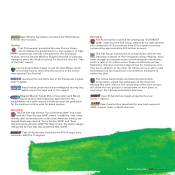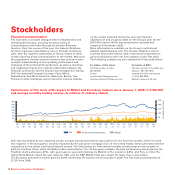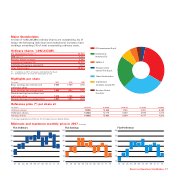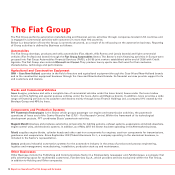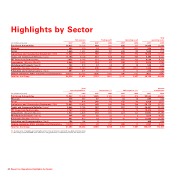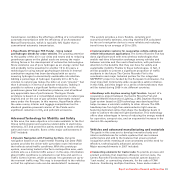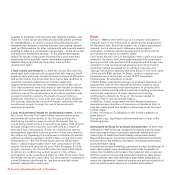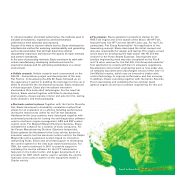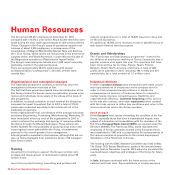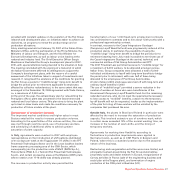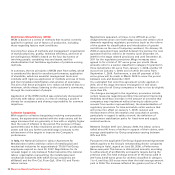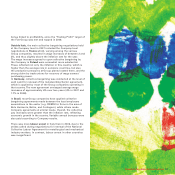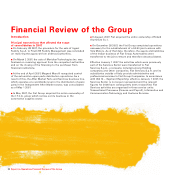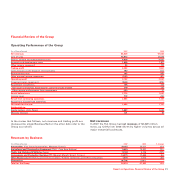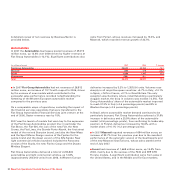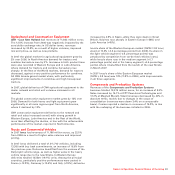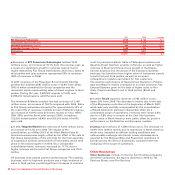Chrysler 2007 Annual Report Download - page 25
Download and view the complete annual report
Please find page 25 of the 2007 Chrysler annual report below. You can navigate through the pages in the report by either clicking on the pages listed below, or by using the keyword search tool below to find specific information within the annual report.possible to eliminate reinforcements and retaining brackets, and
make for a more robust assembly process with greater potential
for standardization. A number of processing alternatives were
assessed and validated, including lost wax steel casting, already
used by CNH suppliers for other components, which would make it
possible to achieve an immediate improvement – at the same cost
and with very limited investments – in the dimensional quality
target. The results of the Centro Ricerche Fiat’s work were then
transferred to the new APL tractor development platform for
detailed analysis by both the innovation team and the
development team.
■New vehicle architectures. In 2007, the Centro Ricerche Fiat
developed new architectural concepts that will improve the B
segment car’s structural competitiveness in terms of efficiency
and performance. The body shell front frame was modified to
meet the new deformable barrier frontal impact test
requirements that will become mandatory before the end of
2011. Improvements were also made in side impact protection,
where an innovative approach was developed which makes
optimum use of the contributions of all vehicle systems (seat,
occupant retention systems, floorpan), thus permitting a
significant reduction in body side and closure panel weights.
The concept doubles the amount of weight reduction that can
be achieved, simply through the use of materials with
improved properties.
■Low environmental impact air conditioning system. In 2007,
the Centro Ricerche Fiat made further improvements in the
environmental sustainability of the Group’s vehicles by
developing innovative ways to reduce the impact that air
conditioning systems have on greenhouse gases, both directly
through refrigerant emissions, and indirectly as a result of
increased fuel consumption. A new air conditioning system
management algorithm cuts the amount of fuel consumed by
the vehicle by regulating the compressor activation threshold
without penalizing occupant comfort. Tests carried out on two
demonstrators – the Fiat Panda Kyoto and the IVECO Daily
Kyoto – showed appreciably lower fuel consumption for the
type of vehicle and mission. As part of the European B-COOL
project, moreover, the Centro Ricerche Fiat used a Fiat Panda
to test an air conditioning system based on CO2, whose
contribution to the greenhouse effect is 1,300 times lower than
the R134a refrigerant used today. The demonstrator establishes
a new European benchmark for low environmental impact
systems designed for small cars.
Elasis
Set up in 1988 by the Fiat Group as a company dedicated to
research work in the framework of development programmes
for Southern Italy, Elasis has grown into a highly specialised
research centre whose work addresses technological
innovation, complete vehicle development, mobility and its
environmental impact, and traffic safety.
The Centre has two sites in Pomigliano d’Arco and Lecce, both
located in Southern Italy, with approximately 800 employees
and is provided with sophisticated computer-aided design and
calculation tools and advanced physical and virtual testing
equipment which are based on an ability to develop and
manage information systems that puts Elasis in the front ranks
of the world’s R&D centres. At Elasis, work on engines and
transmissions is carried out as part of FPT Powertrain
Technologies’ development projects.
In 2007, Elasis continued to pursue its strategic objectives of
forging new links in the research/innovation system’s value
chain and of promoting local development. In pursuing this
objective, Elasis worked within consortia including universities
and private institutions in basic research and training,
continuing to sharpen its focus on the issues related to
mobility and its environmental impact.
In addition, Elasis cooperated with the Naples Employers’
Association and chambers of commerce in Southern Italy to
help the area’s small and medium enterprises make the most
of their skills.
Further information is available on the Centre’s website at
www.elasis.it
During the year, significant achievements were made in the
following areas:
■Innovative methods for products and processes. In 2007, new
methods for the Fiat Group companies’ products and processes
were developed using a synergistic approach whose goal is to
reduce time to market and build design and product quality.
Research focused on numerical modelling methods for products
and manufacturing facilities, simulation of product performance,
and automated testing.
In numerical product modelling, parametric models (archetypes) of
body shell systems were developed which make it possible to
reduce the modelling and revision time required, and are also an
effective means of conserving corporate know-how. New virtual
reality methods were also developed that enable researchers to
assess the appearance, functional aspects and perceived quality of
new car interiors and exteriors in a realistic environment.
Report on Operations Research and Innovation24



